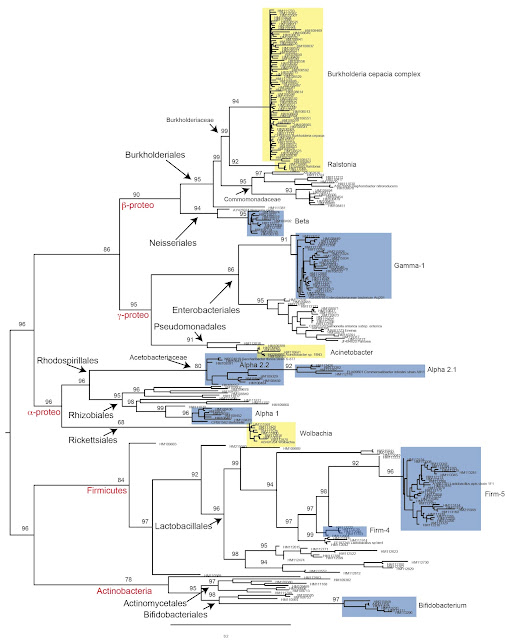Creating a bee-specific database

Arguably, 454 pyrosequencing has revolutionized the field of microbial ecology. Where it was once costly to generate libraries of a few hundred 16S rRNA gene sequences, 454 pyrosequencing allows researchers to deeply probe a microbial community at relatively little cost per sequence. The ultimate goal of 454 pyrosequencing amplicon studies is to characterize a microbial community, either in terms of composition (DNA) or activity (RNA). A large number of groups have been using the Ribosomal Database Project's Naïve Bayesian Classifier (RDP-NBC) to achieve this goal (Wang et al., 2007). The advantages are numerous but I'll list a few of the practical ones here: classification is straightforward (putting sequences in their taxonomic context), efficient (especially when considering tens of thousands of sequences) and does not require full length 16S sequences (making it an appropriate tool for pyrosequencing studies). However, the NBC relies on an accurate training set – on